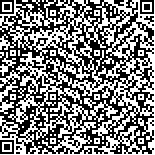| 摘要: |
| 绿色建筑管理是绿色可持续建筑发展
的重要组成部分,但目前绿色建筑管理面临一
些问题。《绿色建筑评价标准》(以下简称“绿
建标准”)的申报计划与建筑项目进展阶段不
协调;“绿建标准”版本过于繁复,条款分类和
项目流程脱节;项目管理者缺乏快速了解“绿建
标准”条款、条款的公众认受度和条款增量成
本率的提示工具。通过文献整理分析、企业访
谈、问卷调查、专家采访、国内外案例研究和编
程实验,本文定性和定量地研究了“绿建标准”
框架、高得分条款的认受度和其直接增量成本
率,并开发了以项目开发为导向的可操作决策工
具。该工具可让项目开发管理者清晰地定位绿色
建筑,同时有助于项目管理者和决策者按空间
层级组织不同专业人员制定相应的绿色建筑措
施。最后,本文还开发了简便易用的《绿色建筑评价标准应用手册》和绿色建筑管理小程序,旨在
提高“绿建标准”在项目中的可操作性,并调动决策者的积极性。 |
| 关键词: :项目管理 绿色建筑评价标准 可操作性 空间层级 认受性 增量成本率 决策 |
| DOI:10.13791/j.cnki.hsfwest.20240614 |
| 分类号: |
| 基金项目:粤海置地创新研究院创新课题(ZZKT-2022-03) |
|
| Pilot study of a concise and user-friendly management framework of green building projectand an optimization tool for Assessment Standard for Green Building |
|
JIA Beisi,LIU Sibei,CHEN Nianhong,LI Miner,LI Tingyang
|
| Abstract: |
| Green building management is an important part of the development of sustainable and
green building practices. However, the current paradigm of green building management faces
three dilemmas: the application schema of Assessment Standard for Green Building (ASGB) does
not match phases in building project flow and is extremely complicated. In addition, alignment
between the categorization of standard terms and the process of building projects is scarce;
effective tools enabling project managers to quickly assimilate the ASGB standard is absent; user
acceptability is inadequate, and the studies on incremental cost rates of standard terms are few.
Through literature review, industry interviews, random questionnaires, expert consultations,
comparative case studies between domestic and foreign projects, and programming experiments,
this study conducts qualitative and quantitative studies on the existing framework of the ASGB
standard, user acceptability, and the direct incremental cost rates of high-scoring standard terms
and develops a user-friendly decision-making instrument that facilitates the strategic planning of
project development. This tool is designed to enable project managers to precisely set the goal for
green building and guide project leaders in organizing different professionals according to spatial
level for the implementation of selected green building measures. Ultimately, the development of a
succinct and accessible green building operational manual and a miniprogram enhance the practical
application of the ASGB standard to building projects and thereby fosters proactive engagement
among decision-makers.
This article does not only focus on the green sustainability of new buildings but also attaches
importance to the renovation and updating of existing buildings to afford them green sustainability.
Spatial hierarchy theory is introduced to the ASGB standard. Space has five levels: city, community,
building, basic structures (including public energy-saving equipment and materials), and internal
diversified functions, space, and household equipment. Three innovative areas are explored. First, it
classifies the scoring terms of the ASGB standard according to spatial level, project type, decisionmaker
and spatial “hierarchy” theoretical framework and reorganizes them into a green building
hierarchy framework that enables professionals in the construction industry and developers to
understand and operate. Second, the study investigates the characteristics of green buildings
with high public acceptance and low incremental cost rates, constructs economic and acceptance
indicators, and embeds newly constructed indicators into the hierarchical framework of green
buildings. Therefore, existing methods and theories of green building management in academic
theory are updated. Finally, an operational manual for the ASGB standard is developed on the basis
of the perspectives of construction industry professionals and developer managers. This manualenables professionals and developer managers from construction industry to quickly understand personnel and tasks required for the implementation of green
building projects. This feature is the value of the research results in practical applications.
By studying the acceptability and economy of green building measures, it’s found that the ASGB standard terms and green building measures at the
city, building, and management levels are highly recognized, have low direct incremental cost rates, and high achievable ratings. Although structure and
technical innovations are the important components of the ASGB standard, have high scores, and are widely adopted in existing green building three-star
projects in Guangdong, their economic viability is low and their recognition is average. The community and functional levels have the lowest scores but
should be carefully considered in project decision-making.
Energy-saving technologies between the “three stars” green buildings in Guangdong and BE green buildings in Europe have three differences. The “three
stars” cases mainly adopt active energy-saving technology, whereas the BE cases focus on passive energy-saving design. “Three-stars” cases tend to use
high-tech equipment, and BE cases tend to reduce or eliminate the use of building equipment. The intelligent systems in “three-stars” case mainly focus on
monitoring. By contrast, the BE cases utilize monitoring data for real-time intelligent control.
To enhance the operability of green building management, establishing a comprehensive green building management tool that is in line with China’s
national conditions is necessary. This study combines the green building process with spatial hierarchy, classifies individual allocation and the ASGB
standard terms according to spatial hierarchy, and clarifies their economic and acceptability. Moreover, the ASGB standard operational manual and
corresponding green building management miniprogram are established. Practices have proven that the use of this tool by professionals can effectively
enhance participation in green building decision-making, facilitate the rapid development of strategies that meet the star rating requirements of green
building projects, and enhance awareness of sustainable development and green building standards. |
| Key words: project management Assessment Standard for Green Building operability spatial levels acceptability incremental cost rate decision-making |


